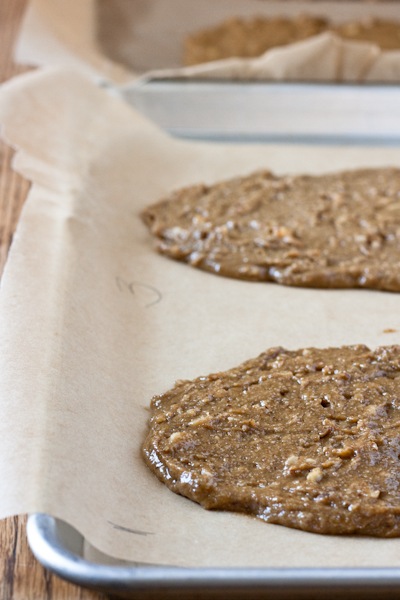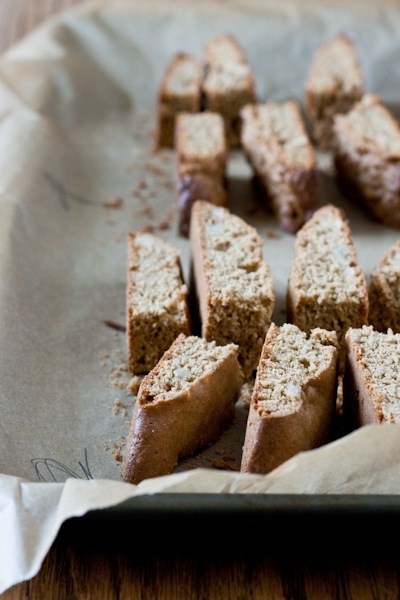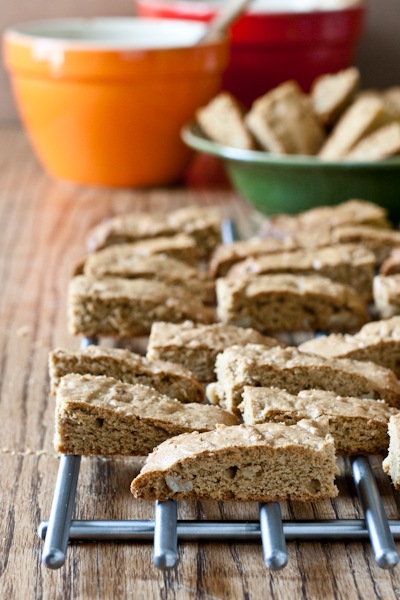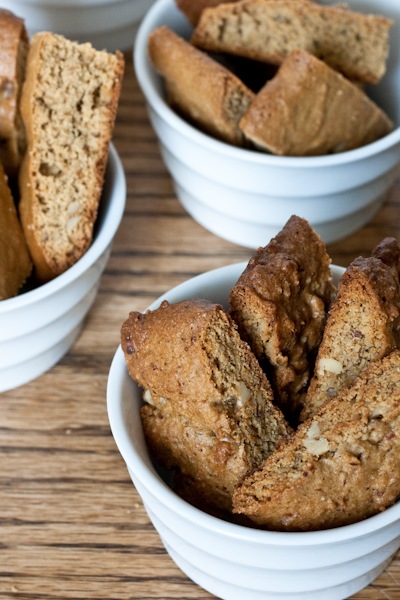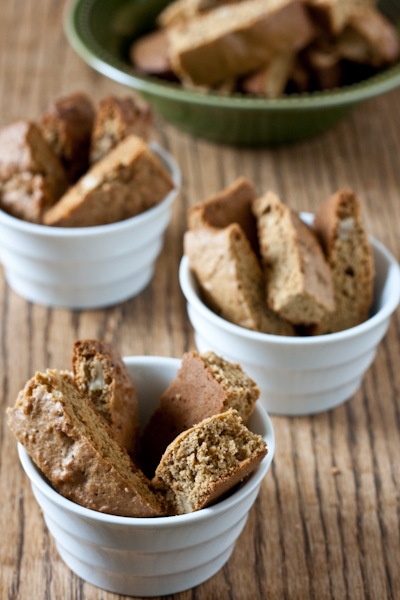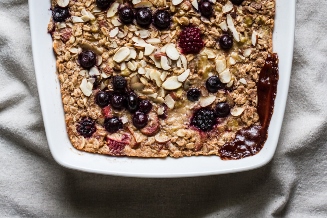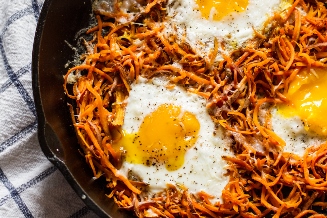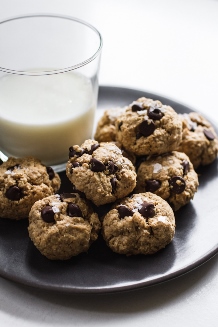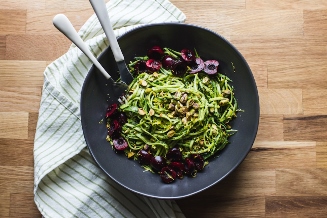at it again
/You know how sometimes I go on baking sprees? Like with my zucchini breads 1, 2, 3, 4 + 5? Testing out different versions of a recipe to get them juuuust right? I did this before going gluten free, but now that I’m GF, it happens even more.
I’ve been missing cookies like crazy lately, and what better month to start baking cookies then December?
Last year, I was on a mission to perfect mandel bread, a Jewish cookie similar to biscotti. Traditionally, it’s made with sugar, white flour, eggs, oil, baking powder, vanilla + walnuts. It’s a very simple recipe, but for some reason it was giving me issues. I blame the altitude!
I made a few changes to compensate for the altitude + also came away with a vegan version as well.
Well today, I was back at it again. I’ve missed this crunchy cookie for the past year! I am determined to perfect a gluten free version.
Today, I made a list of 4 different versions to try. First, I cut the recipe down to only 1/3. It calls for 3 eggs, 3c of flour and other easy measurements to change. Why have 4 full-sized batches around, when I don’t know how they’ll turn out? I threw together 4 trials in about 20min or less and was on my way.
Here are the flour combinations I tried:
- 1/2c + 2T GF oat flour + 1/4c rice flour + 1/4c almond meal
- 1/c + 2T GF oat flour + 1/2c rice flour + 3T tapioca starch
- 1/2c + 2T GF oat flour + 1/2c sorghum flour + 1T tapioca starch
- 1/2c + 2T sorghum flour + 1/2c almond meal + 2T tapioca starch
*tapioca starch = tapioca flour – A common starch used in baked goods, which acts as a thickening agent. You’ll commonly see this called for in pies. It blends really well, unlike some other starches, which can ball up + become gelatinous. Different starches are good for different types of recipes. I’ve read this is a great addition to GF cookies because it helps give them a chewy texture. I wasn’t looking for a chewy texture with these cookies, as they are crunchy, but it’s good to know tapioca starch can help.
Before baking, I numbered the different batters in pencil, on the parchment paper. The worst thing about baking multiple batches at once is getting them mixed up!
Just like with biscotti, these get double baked.
They all held together perfectly! This is a slightly crumbly cookie to begin with, and then trying to make it gluten free, could have caused disasters. Since there is no gluten in GF flours, baked goods don’t hold together nearly as well and their textures are noticeably different than baked goods using white, wheat + spelt flour.
Gluten helps bind ingredients together + creates an elastic, doughy texture, typically difficult to mimic with gluten free flours. Often times, you’ll see gluten free baked goods with extra eggs, added starch, or xanthan gum. These are ingredients that help bind everything together and give them better texture.
This was my first time baking with sorghum flour + tapioca starch. [I’ve uses tapioca starch, but only in pies.] Sorghum flour has 120 calories, 3g fiber + 4g protein, per 1/4c serving. It’s described as a sweet flour, which can commonly be found as an ingredient in cereals.
- 1/2c + 2T GF oat flour + 1/4c rice flour + 1/4c almond meal
- The combination of flours provided great flavor. The cookie is traditionally light in flavor, which is what made me think to use oat flour. The rice flour doesn’t have much flavor impact, and I thought the almond meal would help to richen it up a bit. The rice flour was definitely detectable in texture. It was a bit too grainy for my liking, even though it was a very finely ground.
- 1/c + 2T GF oat flour + 1/2c rice flour + 3T tapioca starch
- This recipe used the most starch, and you could definitely tell in the end result. It was the lightest cookie in texture. Not quite as hearty as the original. It was also slightly bland from the starch and not including any almond meal, like trial 1.
- 1/2c + 2T GF oat flour + 1/2c sorghum flour + 1T tapioca starch
- The flavor of this was almost spot on, but the sorghum flour actually made this batch too sweet. Also, the sorghum flour made the cookie have a slightly mealy texture, similar to the rice flour.
- 1/2c + 2T sorghum flour + 1/2c almond meal + 2T tapioca starch
- This was by far the best texture, which I attribute to the 1/2c of almond meal. The sorghum flour was still detectable in texture however and the flavor needed to be a bit more mellow.
Findings:
- Sorghum flour adds a mealy texture when too much is used.
- Sorghum flour can also make things too sweet and give a slightly malty flavor.
- Be careful with almond meal, as it is more heat sensitive and can burn.
- Too much tapioca starch will cause these to be airy + light.
- Brown rice flour has a noticeably grainy texture.
- Amount of eggs, oil + sugar will remain the same.
Now what?
- First, I will use sweet rice flour, instead of brown rice flour in baked goods. I use the sweet rice flour in all of my doughnut recipes, and the graininess is never detectable. I bought a bag of brown rice flour because it was much cheaper, but the sweet rice is far superior.
- The amounts of sorghum and/or rice flour used, need to be lessoned.
- No more than 2T tapioca starch will be used. [or 6T in the full recipe]
Three more trials coming at you later this week. While all four of these recipes worked, I think I can get it a little closer to the real thing.
We shall see! Ohhh, how I love kitchen experiments!
Ashley



